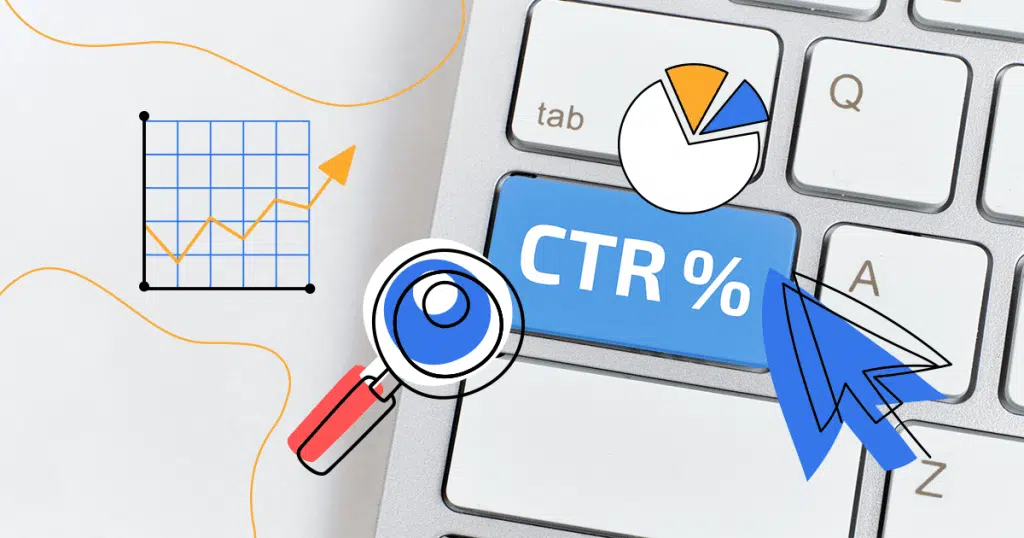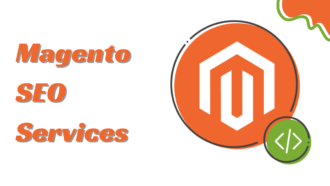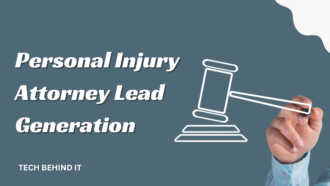How SEO and Paid Search Work Together to Boost Your Online Presence
- 1 Understanding SEO and Its Role
- 1.1 The Power of Organic Reach
- 1.2 Leveraging Paid Search for Instant Visibility
- 1.3 Strategies for Effective Paid Search Campaigns:
- 1.4 Enhancing Visibility and Click-Through Rates
- 1.5 Strategies for Enhancing Visibility and Click-Through Rates:
- 1.6 Targeting Different Stages of the Customer Journey
- 1.7 Maximizing ROI with Data-Driven Insights
- 1.8 Strategies for Maximizing ROI with Data-Driven Insights:
- 2 Conclusion
In the dynamic landscape of digital marketing, the synergy between Search Engine Optimization (SEO) and Paid Search (also known as Pay-Per-Click or PPC) is pivotal for maximizing online visibility and driving traffic to your website.
While SEO focuses on organic strategies to improve your website’s ranking in search engine results, Paid Search complements it by offering immediate visibility through paid advertisements. Let’s explore how these two strategies intertwine to create a formidable online presence.
Understanding SEO and Its Role
SEO is the art and science of organically optimizing your website to rank higher in search engine results pages (SERPs). It involves various techniques, including keyword optimization, content creation, link building, and technical optimization.
SEO aims to enhance your website’s visibility and attract relevant organic traffic by aligning it with search engine algorithms. Sage Digi Marketing Agency San Francisco strategically blends SEO tactics to improve businesses’ online visibility and precisely achieve marketing objectives.
The Power of Organic Reach
One of SEO’s key benefits is its ability to generate sustainable, long-term results. Unlike paid advertising, which stops driving traffic once the budget runs out, SEO continues to yield results over time.
Businesses can establish authority in their niche by consistently delivering high-quality content, optimizing website structure, earning reputable backlinks, and enjoying steady organic traffic.
Leveraging Paid Search for Instant Visibility
While SEO provides lasting benefits, it often takes time to see significant results. This is where Paid Search comes into play. With PPC advertising, businesses can bid on keywords relevant to their products or services and display their ads prominently in search engine results. Paid Search offers immediate visibility to a targeted audience, making it an invaluable tool for generating leads and driving conversions.
Strategies for Effective Paid Search Campaigns:
- Keyword Research: Conduct thorough keyword research to identify relevant search terms with high search volume and low competition. Utilize keyword research tools and analytics data to refine your keyword list continuously.
- Compelling Ad Copy: Craft persuasive ad copy that resonates with your target audience and highlights your unique selling propositions (USPs). Use compelling language, clear calls-to-action (CTAs), and relevant keywords to increase click-through rates (CTR) and conversions.
- Landing Page Optimization: Ensure that your ads lead to optimized landing pages that provide a seamless user experience and fulfil the promise of your ad copy. Optimize landing page elements such as headlines, copy, images, and forms to align with user intent and encourage conversions.
- Budget Management: Set clear objectives and allocate your budget strategically across campaigns, ad groups, and keywords. Monitor your spending closely and adjust bids based on performance metrics to maximize ROI while minimizing waste.
- Ad Testing and Optimization: Continuously test different ad variations, including headlines, descriptions, CTAs, and imagery, to identify the most effective messaging and creative elements. Use A/B and multivariate testing to refine your ads and improve performance over time.
- Monitor and Analyze Performance: Regularly monitor key performance indicators (KPIs) such as CTR, conversion rate, cost per acquisition (CPA), and quality score. Analyze performance data to identify trends, insights, and opportunities for optimization.
Enhancing Visibility and Click-Through Rates
When SEO and Paid Search work together, they create a comprehensive approach to online visibility. While SEO lays the foundation for organic traffic growth, Paid Search complements it by capturing immediate attention at the top of SERPs. Research shows that when a website appears in both organic and paid search results for the same keyword, it significantly increases click-through rates and instils trust among users.
Strategies for Enhancing Visibility and Click-Through Rates:
- Optimize for Search Engines: Implementing SEO best practices is fundamental to improving visibility in organic search results. Conduct keyword research to identify relevant search terms and integrate them strategically into website content, meta tags, and URLs. Optimize website structure, improve page load speed, and prioritize mobile responsiveness to enhance user experience and search engine rankings.
- Create Compelling Content: High-quality, relevant content captures user attention and encourages clicks. Develop engaging blog posts, articles, videos, infographics, and other content formats that address the needs and interests of your target audience. Use captivating headlines, compelling imagery, and clear calls-to-action (CTAs) to entice users to click through to your website or landing page.
- Utilize Paid Advertising: Supplement organic efforts with paid advertising campaigns to increase visibility and drive targeted traffic to your website. Invest in pay-per-click (PPC) advertising on search engines and social media platforms to reach users actively searching for products or services related to your business. Craft compelling ad copy, utilize ad extensions, and leverage audience targeting options to maximize CTR and ROI.
- Optimize Meta Titles and Descriptions: Meta titles and descriptions serve as the first point of contact between users and your website in search engine results. Craft concise, compelling meta titles and descriptions that accurately reflect the content of your pages and entice users to click through. Incorporate relevant keywords naturally while maintaining readability and relevance.
- Enhance Visual Appeal: Visual content can significantly impact CTR and user engagement. Incorporate high-quality images, videos, and graphics into your website, blog posts, and social media posts to capture attention and convey information effectively. Use visually appealing thumbnails, infographics, and interactive elements to stand out in crowded SERPs and social feeds.
- A/B Test and Iterate: Continuously test different elements of your online marketing campaigns, including headlines, ad copy, imagery, and CTAs, to identify what resonates most with your target audience. Use A/B and multivariate testing to refine your strategies and optimize for maximum visibility and CTR. Analyze performance metrics and iterate based on insights to improve results continuously.
Targeting Different Stages of the Customer Journey
Another advantage of integrating SEO and Paid Search is the ability to target users at different stages of the customer journey. SEO excels at capturing users in the research phase, where they’re actively seeking information or solutions to their problems. On the other hand, Paid Search is ideal for reaching users in the consideration and decision stages, where they’re ready to make a purchase or take action.
Maximizing ROI with Data-Driven Insights
SEO and Paid Search provide valuable data insights, enabling businesses to refine their marketing strategies and enhance return on investment (ROI). By analyzing keyword performance, conversion rates, and user behaviour, businesses can pinpoint optimisation opportunities and allocate resources more efficiently. This data-driven approach ensures that marketing efforts align with business objectives, yielding measurable results.
Strategies for Maximizing ROI with Data-Driven Insights:
- Define Clear Objectives and KPIs: Establish marketing objectives and define key performance indicators (KPIs) aligning with your business goals. Whether it’s increasing website traffic, generating leads, or driving sales, having measurable objectives enables you to track progress and evaluate the effectiveness of your marketing efforts.
- Implement Advanced Analytics Tools: Invest in advanced analytics tools and technologies that provide real-time data insights across various channels and touchpoints. From Google Analytics to customer relationship management (CRM) systems and marketing automation platforms, these tools offer valuable data on user behaviour, engagement, and conversion paths.
- Track and Analyze User Behavior: Monitor user behaviour across your website, social media platforms, email campaigns, and other marketing channels to gain insights into customer preferences and interests. Analyze metrics such as bounce rate, time on page, click-through rate (CTR), and conversion rate to identify areas for improvement and optimization.
- Segment and Personalize Marketing Campaigns: Leverage data segmentation to divide your audience into smaller, more targeted groups based on demographics, interests, and behaviours. Tailor your marketing campaigns and messaging to each segment to increase relevance and engagement. Personalization techniques such as dynamic content, personalized recommendations, and email automation can significantly impact ROI by delivering more personalized experiences to your audience.
- Optimize Ad Spend and Allocation: Use data-driven insights to optimize your advertising spend and allocation across different channels and campaigns. Analyze performance metrics such as cost per acquisition (CPA), return on ad spend (ROAS), and customer lifetime value (CLV) to identify high-performing channels and allocate budget accordingly. Monitor and adjust your ad campaigns based on performance data to maximize ROI.
- Experiment and Iterate: Embrace a culture of experimentation and iteration by testing different marketing strategies, tactics, and messaging to see what resonates best with your audience. Use A/B testing, multivariate testing, and other experimental methods to validate hypotheses and refine your approaches over time. Analyze the results of your experiments and use data insights to inform future decision-making and optimization efforts.
Conclusion
In today’s competitive digital landscape, a holistic approach to online marketing is essential for success. By merging the enduring advantages of SEO with the instant exposure of Paid Search, businesses can solidify their online presence, draw in qualified traffic, and spur conversions. By grasping the synergy between SEO and Paid Search, companies can harness the unique strengths of each strategy to meet their marketing goals and outshine their competitors.


















